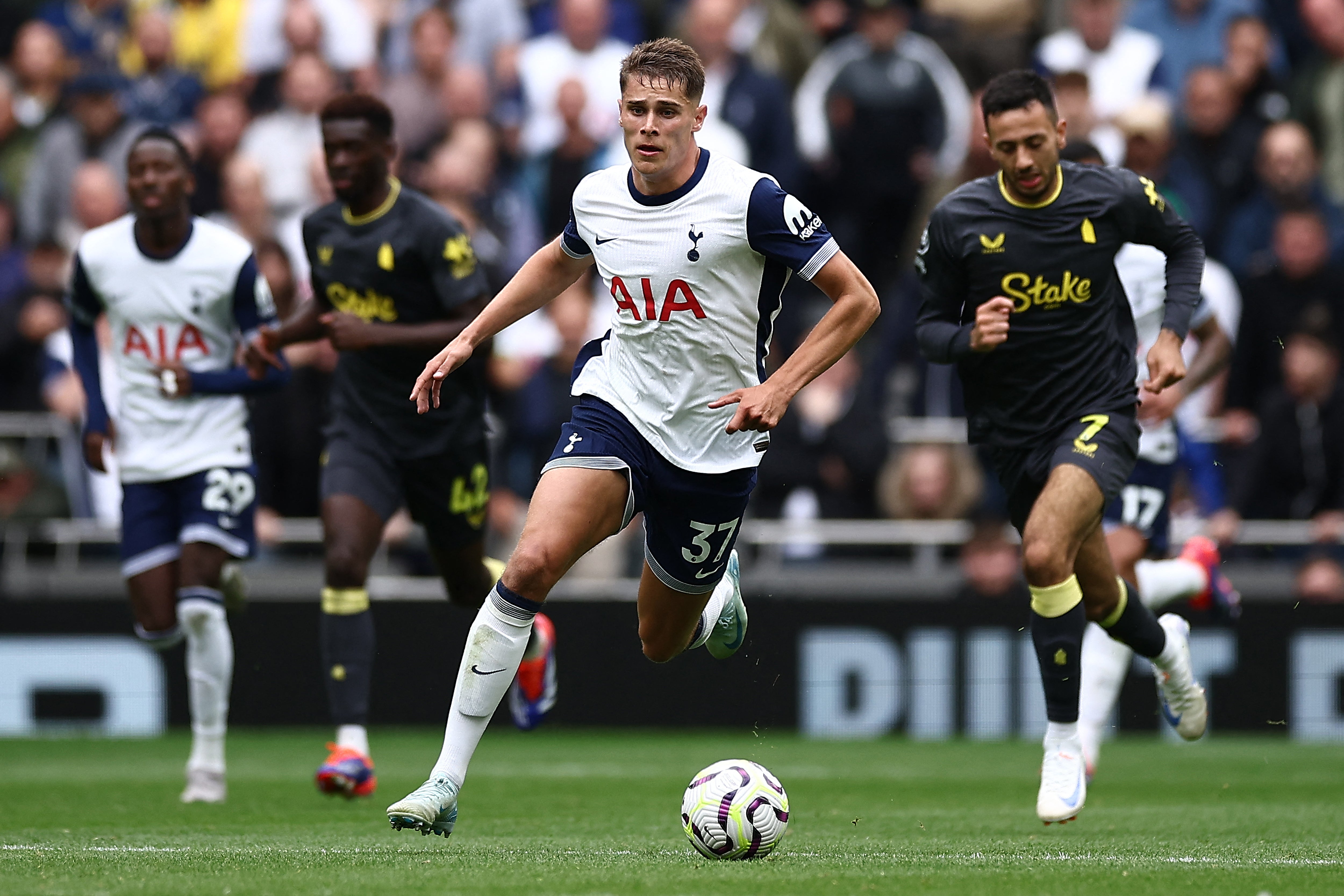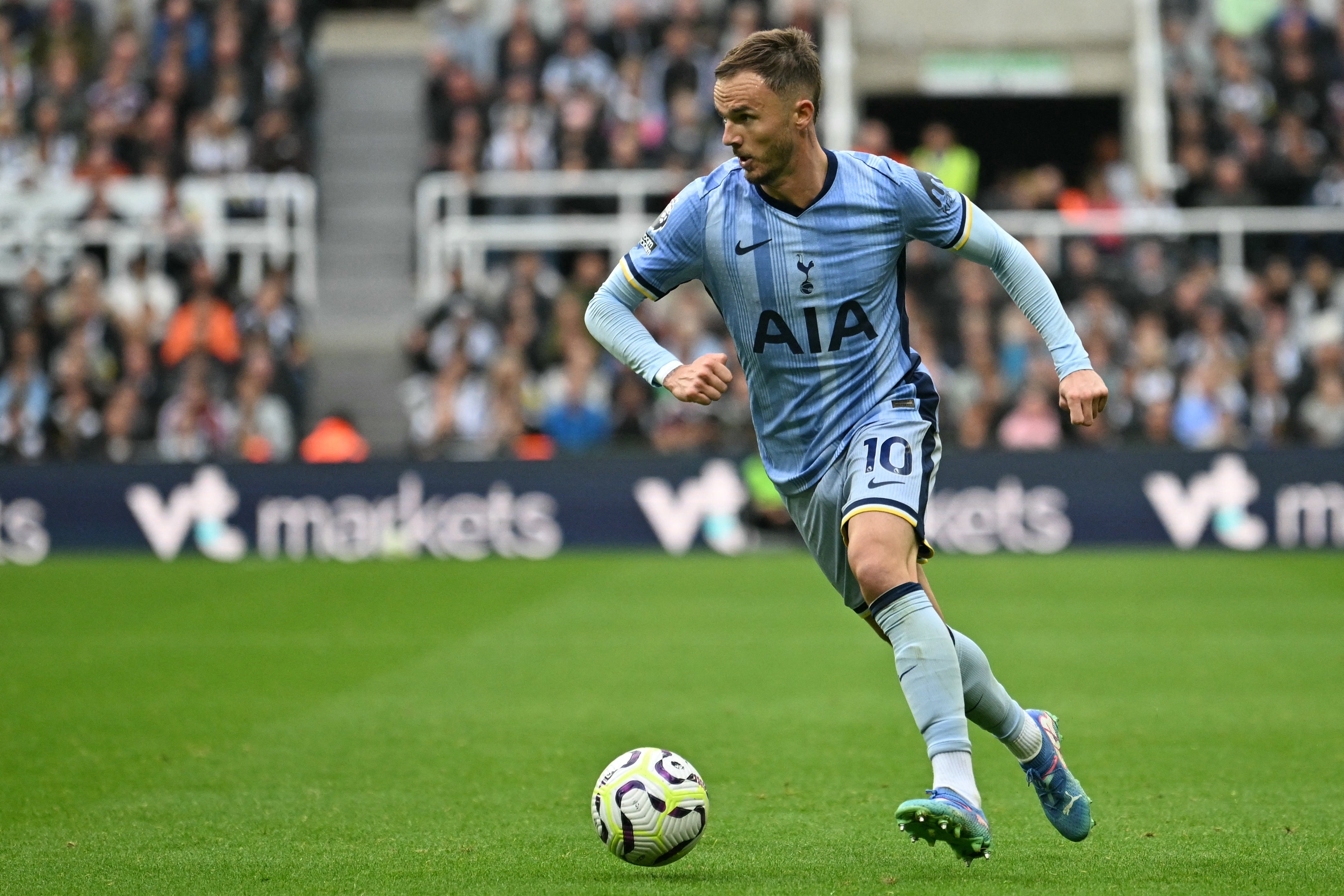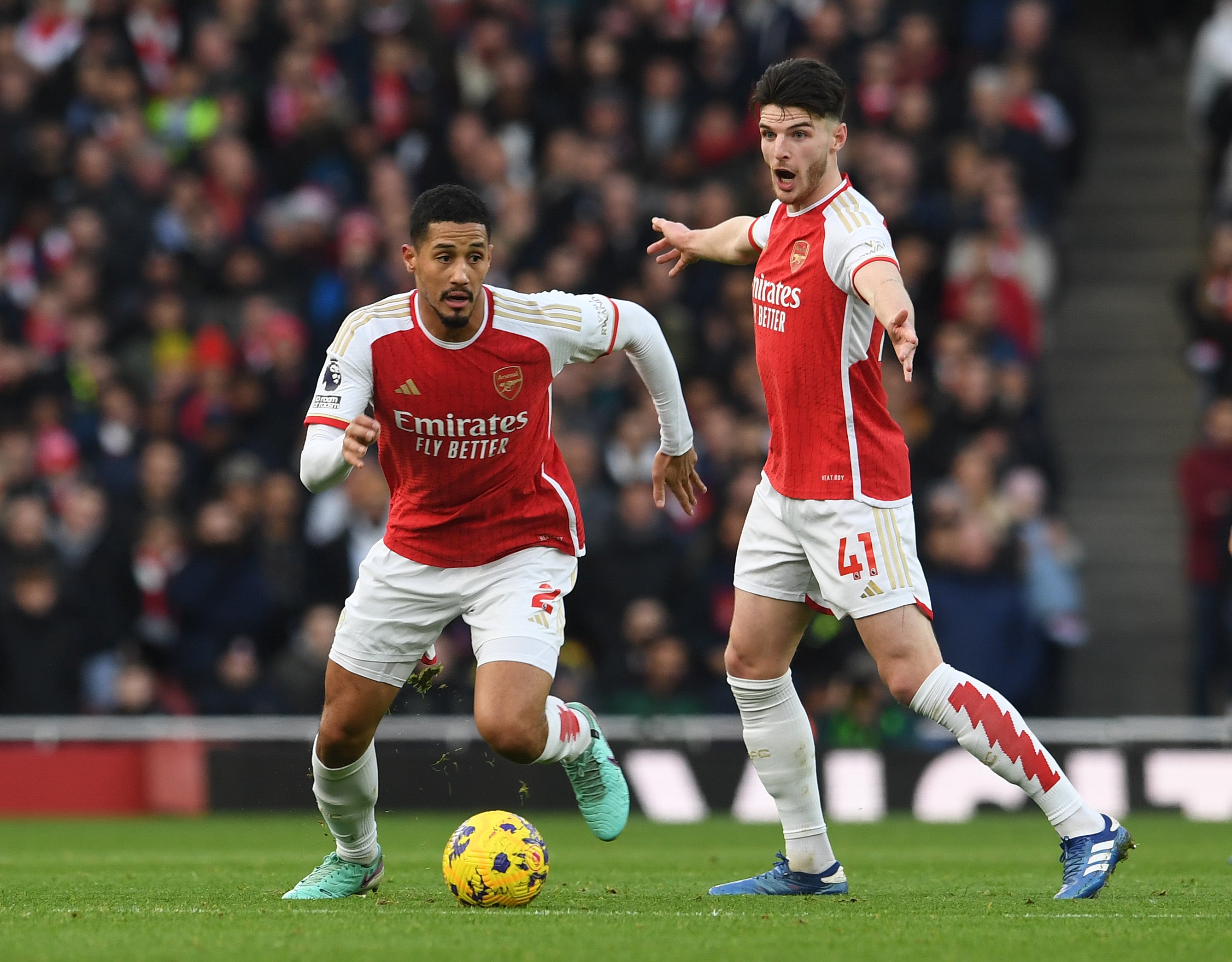The key difference between Ange Postecoglou and Mikel Arteta that will decide the north London derby
With Arsenal facing a midfield crisis, how does Arteta shut down Spurs’ big threat?

Your support helps us to tell the story
From reproductive rights to climate change to Big Tech, The Independent is on the ground when the story is developing. Whether it's investigating the financials of Elon Musk's pro-Trump PAC or producing our latest documentary, 'The A Word', which shines a light on the American women fighting for reproductive rights, we know how important it is to parse out the facts from the messaging.
At such a critical moment in US history, we need reporters on the ground. Your donation allows us to keep sending journalists to speak to both sides of the story.
The Independent is trusted by Americans across the entire political spectrum. And unlike many other quality news outlets, we choose not to lock Americans out of our reporting and analysis with paywalls. We believe quality journalism should be available to everyone, paid for by those who can afford it.
Your support makes all the difference.They’re the sort of problems Mikel Arteta enjoys figuring out, even if he hates the reason he has to do it. With the Arsenal manager potentially missing his entire first-choice midfield on Sunday, he and his staff have been assessing the data on how long it would take Tottenham Hotspur to get up the pitch if the ball is lost in a certain area. They’re now conscious of the power of Ange Postecoglou’s own midfield. Those who know Arteta say this is an underappreciated aspect of his approach to football. He sees a lot of it in terms of pure maths. If space is left in one area, it’s about the speed with which the opposition can use it. The different numbers influence formation shape, down to where a midfielder sits.
They also influence numbers of a more simple kind, which may frame this north London derby. That is both managers’ approach to keeping goals out. Sunday will be last season’s best defence against one that is distinctly mid-table, a mere 29 goals conceded against a massive 61. For all the focus on midfields, this match may well come down to different interpretations of how you defend.
That difference is all the more striking since both Arteta and Postecoglou have been significantly shaped by the same broader ideology. They both apply principles of the Pep Guardiola Dutch-Spanish approach that has come to dominate modern football, and has been so fully integrated by City Football Group. Arteta directly worked under Guardiola as assistant at Manchester City, Postecoglou worked under the wider tactical umbrella at Yokohama F Marinos. The latter was specifically picked by Brian Marwood for the Japanese club in 2018 because he fitted the CFG ethos.
That also illustrates how the tactical connection isn’t quite as deep, since Postecoglou was already over two decades into his coaching career by then. That comes across in the play on the pitch, and in the Australian’s guiding philosophy.
“As a coach, when I’m watching the game, I’m just not comfortable when the opposition have the ball,” Postecoglou is quoted in Vince Rugari’s excellent new Angeball biography. “I don’t want to be in a situation where I’m watching the opposition working us around the pitch or looking for space. Even our defensive work doesn’t stray from what our core belief is: we want to be a team that has the ball. We want to be an aggressive, attacking, bold, brave team.”
Many of those words sound like what Guardiola or Arteta regularly say, but not fully. They are ultimately about control.
Postecoglou is about explosions, and games that become spectacles.
“The end goal is we just want to score more goals than everybody else,” he added. This is the force that Arsenal will face on Sunday. They had better be ready.
It was this that initially made Tottenham one of the happiest places in the Premier League during Postecoglou’s first few months.
Fans were simply excited again. And who couldn’t be? It led to absorbing games, adventurous play and the ultimate football endorphin rush of late winners. All the defending was front-foot, as illustrated in the aggression of Micky van de Ven and Cristian Romero. Even the full-backs are often used as attacking midfielders, which is something Guardiola himself has lauded

Just as there is another side to the game than attacking, though, that led to another side of the early rush. Supporter enthusiasm gradually gave way to frustration and now a hint of unease, as Postecoglou seemed to resist addressing simple defensive issues dogmatically. That famously extended to a dismissal of set-piece coaching.
Such purism has fed into a feeling that Postecoglou’s teams have to be perfect for his approach to work, especially in the press to win the ball back. If it is, it’s so worth it. If not, it can go seriously wrong, as seen in the many goals conceded. The recent 2-1 defeat to Newcastle United was an imperfect illustration, if you like. They conceded more of the same type of goal, with opposition sides exploiting wide open space.
It’s hard not to divorce that from the reality that Postecoglou’s titles have often had access to huge resources, in relative domestic terms – including Yokohama and Celtic. That football can work if you have the players making the fewest errors. It might work spectacularly if you have prime Sergio Busquets or Rodri. Without players of that class, which is not Spurs’ market, a perception of “naivety” has spread.
Postecoglou and those close to him would say that specific word has repeatedly come up in every job of his career, only for the manager to keep succeeding. Defensive issues have ultimately been outweighed, which are maths of a different kind. That doesn’t mean there isn’t a limit to it, though, which the Premier League’s highest level might represent. One opposition coach confided that the trick with Spurs is just to keep it tight because one of the centre-halves will eventually do something “crazy”.

Against that, Arteta is all control and logic. He is much more invested in the positional aspect of the Guardiola ideology than Postecoglou. This is where the maths comes in, as the Basque tries to reach a different type of perfection. Arteta and his staff work out certain elements, such as, if an opposition player beats your press in the corner, how quickly would they be able to get up the pitch? One aim is to ensure Arsenal have sufficient control of space around the area that it would take an extra two passes, slowing the opposition’s transition down to seven or eight seconds. Then, the opportunity is gone. The pace of Postecoglou’s wide players could be crucial there. The challenge for Arteta is to configure a team where the numbers for that space and time are as low as possible. It really is becoming that mathematical.
Arteta has sought to further impose this control by changing the profile of his squad as much as the tactics. The weight and height of Arsenal players has gone up in the last two years, visible in Declan Rice and the giant Riccardo Calafiori. William Saliba’s game intelligence added another dimension in 2022, as Arsenal also started to be much more calculated about when players ran beyond the ball.
That has created a tactical shape that is ultimately much more of a block than a Postecoglou team, admittedly aided by Arsenal’s superior spending power.

Another difference is in that approach to set pieces. Arteta was so invested in this element you can control that Arsenal became the top-scoring team from such scenarios last season. That was witnessed in the away win against Spurs which brought more debate about Postecoglou’s own stance.
Such contrasts mean this is one game where it at least looks like it’s easy to predict the pattern of play. With Arteta denied his usual midfield, it seems obvious that Arsenal will congest space around their box and seek to hit Spurs on the break and in set pieces.
That would put even more of an onus on Postecoglou’s side to perform to their higher levels. Arsenal are acutely conscious of Spurs’ pace out wide. They also know a Postecoglou team can just as easily blow you away as blow up.
Spurs have two sides because the manager is quite one-eyed in his vision of attacking. Arteta has sought to be more holistic. It could mean this derby, which is famously the highest-scoring fixture in Premier League history, for once comes down to how you limit the other scoring. Those are simple maths, from higher-level ideological differences.



Join our commenting forum
Join thought-provoking conversations, follow other Independent readers and see their replies
Comments